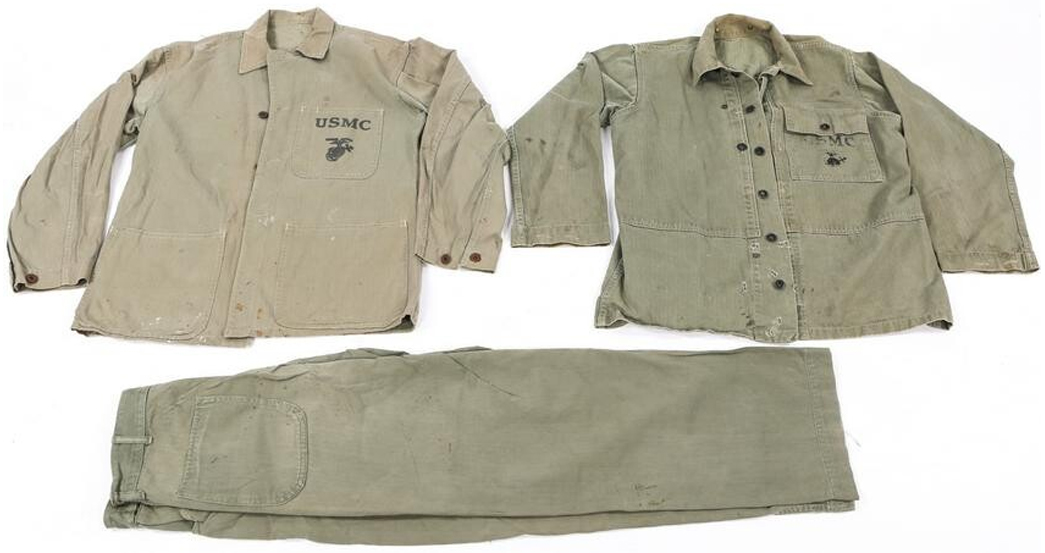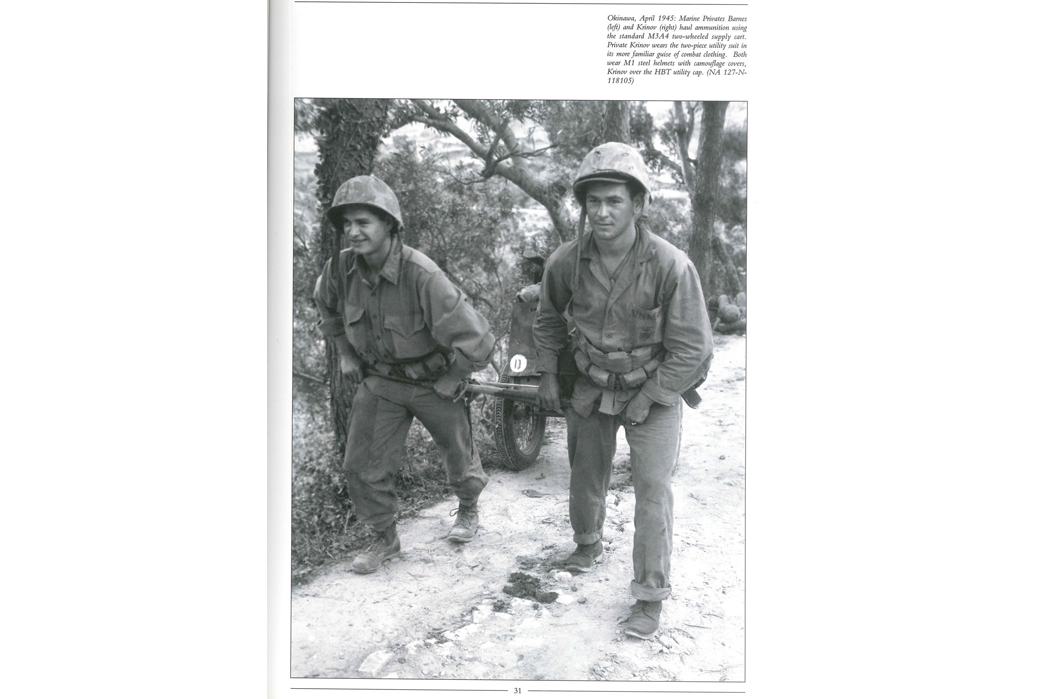- Heddels
- Posts
- May 22 - I&R Herringbone
May 22 - I&R Herringbone
Together with
3,000 Years of Herringbone History with Iron & Resin
Herringbone is one of the first textile patterns devised by humans, we look into its long past and how it's made today.
David Shuck

You know it by feel even if you don’t know it by name. That zig-zag chevron pattern we call “herringbone” has been a part of human culture since the dawn of history.
It’s in the tombs of Ancient Egyptian pharaohs, the brickwork of the Duomo in Florence, and was on the backs of American soldiers as they stormed the beaches at Normandy.
Today, we’re looking at herringbone and its simple structural marvel that has brought designers back to it for over 3,000 years.
What is the Herringbone Pattern?

Ancient Roman roads laid in opus spicatum, still in use in Trajan’s Market in Rome.
Herringbone is a technical term that describes the twill weave pattern on a garment. You may have heard of “left hand” or “right hand” twill, meaning the direction in which the angled twill line on denim fabric.
Herringbone combines both left and right directional twills by alternating them back and forth every few picks (number of yarns in a weave), giving it an iconic zig-zag pattern.

Herringbone pattern diagram via Research Gate.
By combining both twill directions in a broken twill, herringbone doesn’t warp and twist like single direction twills and is stronger and more abrasion resistant.
Where did Herringbone Come From and Why is it Called That?

The Shroud of Turin, probably the most notable piece of herringbone. Image via Antonio Calanni.
The inherent strength of the herringbone pattern has made it a go to for people of a variety of cultures for thousands of years.
The earliest known example of herringbone fabric is a pair of wool leggings dating from 800 to 500 BCE found in the Italian-Austrian Alps. There are other textiles dated to around 600 BCE in Ireland, as well as much more exact 79 CE herringbone uncovered from the ruins of Pompeii, and probably the most notable example of herringbone in existence, the Shroud of Turin which is a woven piece of linen believed to have been the burial wrapping for Jesus.

The dome of the Santa Maria del Fiore Cathedral in Florence supported by a massive spiraling brick herringbone. Image via Distilled History.
The pattern hasn’t been limited to fabric either, the same qualities that make herringbone strong as a textile also work in masonry and architecture.
Ancient Romans laid bricks for their roads in herringbone chevrons which they called opus spicatum or “spiked work”, so did medieval stone masons, and, as mentioned, the Renaissance architect Filippo Brunelleschi to support his massive vaulted dome of the Santa Maria del Fiore Cathedral in Florence, Italy.

Herring fish skeleton in the distinctive pattern. Image via Havwoods.
The name herringbone is a little more recent. Scottish tweed weavers began making the pattern in earnest in the early 1800s, at the dawn of the Industrial Revolution. The other big industry up there was fishing, with herring being one of the most prominent in the North Atlantic.
Perhaps it was a good idea over lunch, but the resemblance between the fish skeleton and the pattern was uncanny and the name herringbone stuck.

Illustrations of “Men’s Hunting and Shooting Costumes” from the early 1880s. Image via Geri Walton.
You may equate herringbone tweed jackets with old professorial types, but in late 19th century England it was the equivalent of Gore-Tex Realtree, the ultimate tough and warm material to take hunting in the countryside.
The next generation of Americans would take that designation for herringbone to the the next level.
HBT in WWII

US Army soldiers stationed in North Africa c. 1943 in second pattern HBT uniforms.
Other militaries had incorporated herringbone into their uniforms in the past, but none with as much gusto as the US Army in the early 1940s.
Before World War II, the Army issued personnel a cotton denim shirt, pants, and a hat for “fatigue duties” (manual labor) and a khaki shirt for the summer. With a new war on the way, the US Quartermaster Corps realized they needed an update in a more camo-friendly color.

The First Pattern HBT uniform jacket Spec. Number 45 in OD8 sage green. Image via At The Front.
In 1941, the QMC introduced what’s known now as the “First Pattern HBT” in OD8 sage green. The herringbone twill suit had a bucket style hat, pointed collar jacket with bellows breast pocket, and flat-front pants with welted pockets. The Army issued this set to personnel in all theaters of the war for both field and fatigue duty.
But uniform contractors couldn’t keep up demand for the new HBTs so the Quartermasters went back to the drawing board and came up with a simplified version of the “First Pattern” at the end of 1942. This was mostly making the pockets easier to produce, they ditched bellowed pockets on the jacket in favor of bigger flat ones and all the set in pockets in the pants for big patch pockets on the hips. This easier pattern would stick around until the end of the war in 1945.

The simplified “second pattern” HBT Army uniform issued in late 1942.
The US Marine Corps followed suit (they had been using Army uniforms until then) and issued their own HBT uniform in the summer of 1942 with the P41. It too would evolve into the P42 and P44 before the war was over.

The P41 jacket (left), P44 jacket (right), and P41 trousers (bottom).
Herringbone would persist in the US Armed Forced until the mid 1960s, when it was phased out in favor of sateen woven cotton and nylon blends.

An interesting image via Military Classic Memorabilia. Despite being taken in 1945, the Private pictured on the right wears the P41 Uniform.
Where Can You Find Herringbone Today?

The hardwearing and unique look of herringbone continues today and you can’t find much better than what’s being produced at Iron & Resin.
The Ventura, California label has a long history with the fabric and has incorporated many of the elements of American uniforms into their designs.
With bellows chest pockets and a narrow herringbone twill, the Landmark shirt would fit in with the Number 45 spec jacket from the Quartermaster’s First Pattern. It has been updated though, with a scalloped hem and rounded cuffs like a shirt to make this 9.5oz. 100% cotton shirt a perfect layering piece.
Available for $129 at Iron & Resin.
Just like the Army’s modified “Second Pattern” the Major Shirt takes a bigger and angular approach with the same fabric. The bellows are swapped for oversized flat chest pockets, patterned at a slight angle for easier access, angular cuffs, and bigger buttons to give the Major more of a workwear edge.
Available for $129 at Iron & Resin.
Iron & Resin’s Brigade Pant takes cues from WWII through the mid 60s with their trusted 9.5oz HBT and a slimmed down silhouette of a fatigue pant. Patch pockets front and back plus an integrated D-ring for whatever you need to keep clipped.
Available for $119 at Iron & Resin.
Finally, the Military Jacket combines the best of both worlds with the chest pockets of the Army HBT and the hip pockets of the Marine P41.
Available for $149 at Iron & Resin.
Like this? Read these:
What did you think of today's newsletter? |





